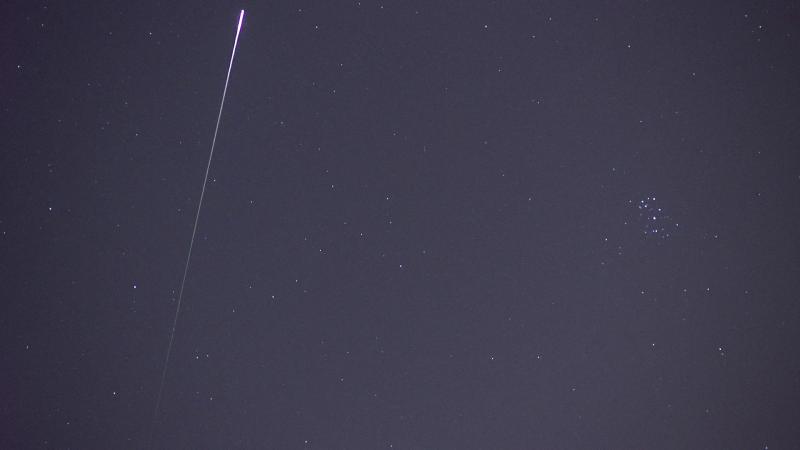2019 December 8
Here Come the Geminids
The first members of this year’s Geminid meteor shower are now beginning to appear. Active from December 6-17, but with a slow rise to maximum, the Geminids are currently the richest of the regular annual meteor showers, producing an abundance of bright meteors, with rates outstripping those of the August Perseids for a 24-hour interval centred on their 14 December maximum.
The Geminid shower radiant (at RA 07h 33m, Dec +32o, just north of the first magnitude star Castor) rises early in the evening and reaches a respectable elevation above the horizon (> 40o) well before midnight, so observers who are unable to stay up late can still contribute very useful watches, although this year the peak occurs over a weekend which may be more convenient for many.
While it is true that the peak of the shower this year occurs only two days after Full Moon, and that at maximum the Moon will be on the Gemini/Cancer border just below Pollux, one should not look directly at the radiant itself to best observe the shower and Geminid meteors may appear in any part of the sky. So visual observers may mitigate the effects of bright moonlight by positioning themselves so the Moon is behind them and hidden behind a wall or other suitable obstruction.
The shower maximum is rather broad and the early morning hours of Saturday, 14th and Sunday, 15th December are likely to yield the greatest Geminid activity for observers in the UK, when the radiant is high in the sky and rates are climbing towards the peak around dawn. December nights can be quite chilly, especially in the early morning hours, so wrap up well with plenty of layers of warm, dry clothing and make sure that you wear a hat, gloves, thick socks and sensible waterproof footwear.
In spite of the moonlight, many Geminids are quite bright and past observations have shown that such meteors become more numerous some hours after the rates have peaked, a consequence of particle-sorting in the meteoroid stream. Given that the peak is predicted for around 14hrs on December 14, this would favour the night of December 14/15 (Saturday night into Sunday morning) for observing the brightest members of the shower.
Geminid meteors enter the atmosphere at a relatively slow 35 kilometres per second, and thanks to their robust (presumably more rocky than dusty) nature tend to last longer than most in luminous flight. Unlike swift Perseid or Orionid meteors, which last only a couple of tenths of a second, Geminids may be visible for a second or longer, sometimes appearing to fragment into a train of ‘blobs’. Their low speed and abundance of bright events makes the Geminids a prime target for imaging, but individual exposures will have to be kept very short this year to prevent fogging by moonlight.
The Geminid shower has grown in intensity over the past 50 years as a result of the stream orbit being dragged gradually outwards across that of the Earth. A consequence is that we currently encounter the most densely-populated parts of the stream. This happy situation is unfortunately only temporary – in a few more decades, Geminid displays can be expected to diminish in intensity. Here we have an excellent opportunity to follow, year on year, the evolution of a meteoroid stream.
The BAA’s visual meteor report forms, available as downloads in both pdf and Excel formats, enable observers to record the details of each meteor seen. These include: time of appearance (UT); apparent magnitude (brightness); type (shower member, or random, ‘background’ sporadic); constellation in which seen; presence and duration of any persistent train. Other notes may mention flaring or fragmentation in flight, or marked colour. Watches should ideally be of an hour’s duration or longer (in multiples of 30 minutes). Observers are reminded to carefully record the observing conditions and the stellar limiting magnitude. Wrap up warmly and enjoy what should be a great show!
By whatever means you observe the Geminids this year, please submit your results to the BAA Meteor Section via meteor@britastro.org.
Dr John Mason
Director, BAA Meteor Section
email: docjohn@dircon.co.uk

| The British Astronomical Association supports amateur astronomers around the UK and the rest of the world. Find out more about the BAA or join us. |
